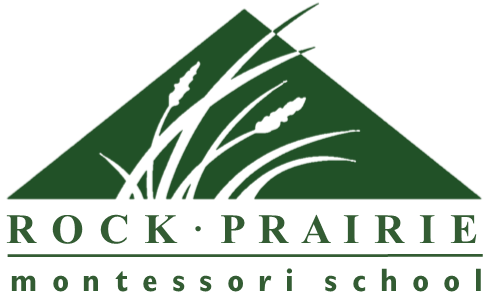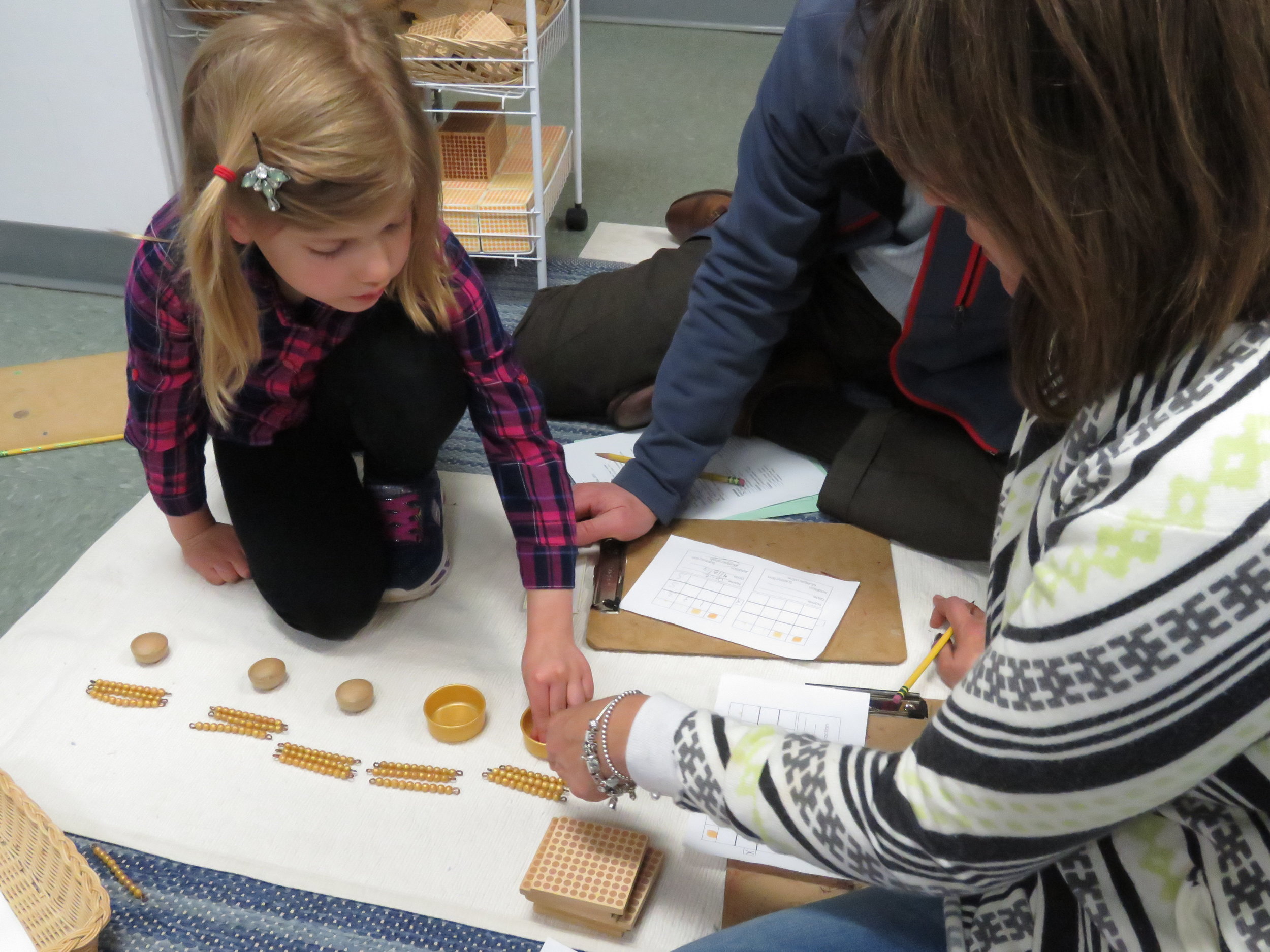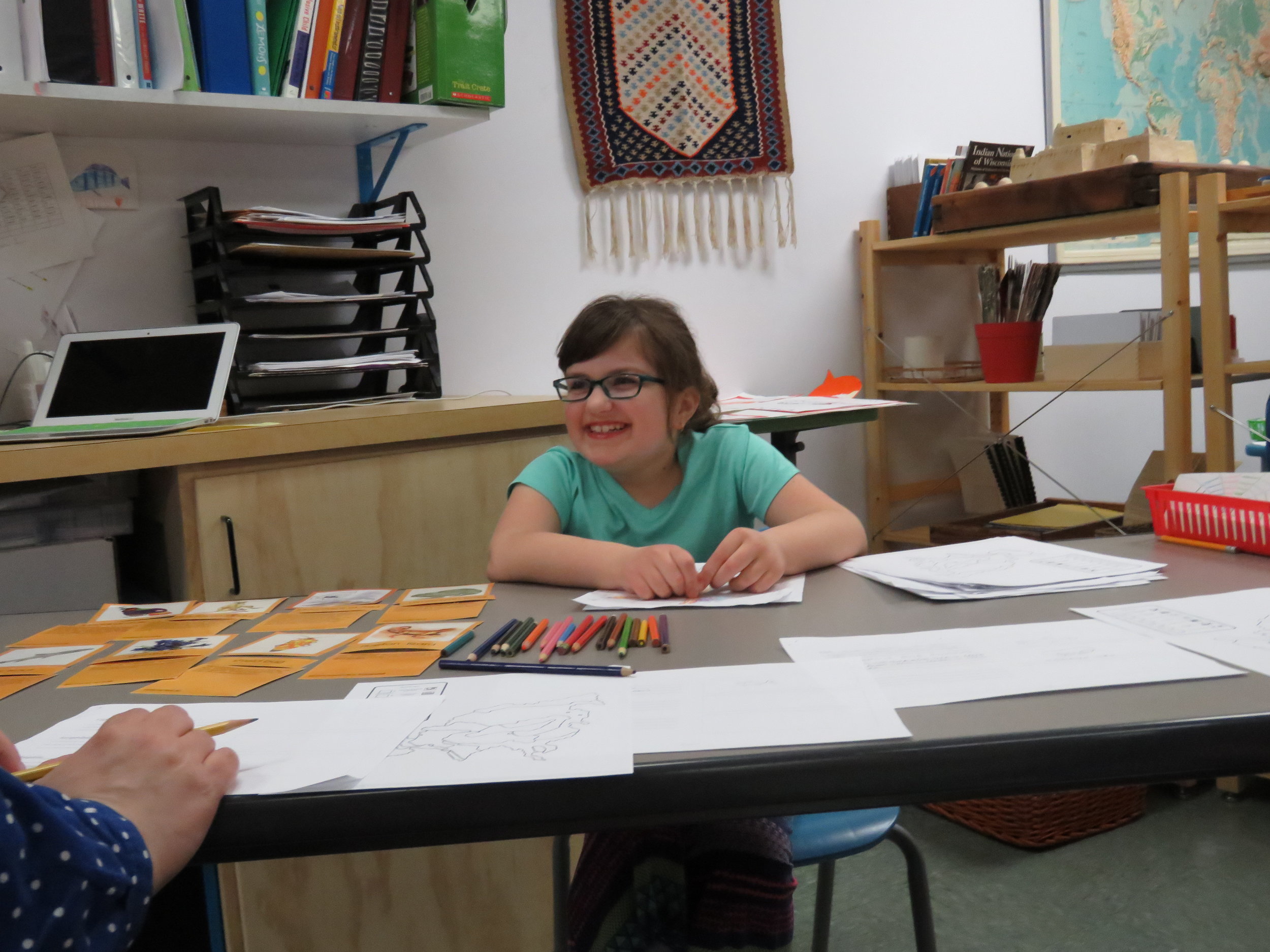ELEMENTARY
Lower Elementary ages 6-9 and Upper Elementary Children ages 9-12 years (1st-3rd, 4th-6th grades) meet from 8:30 am – 3:30 pm (M-F).
Parents who have made the investment in Rock Prairie Montessori School’s Children’s House Program may choose to continue their child’s experience in our Elementary Program. RPMS will accept new students into our Elementary Program; prior Montessori experience preferred but not necessary. To be considered for enrollment the following will be required:
The student will spend at least (3) half-days in the classroom.
The parents/guardians will meet with the teacher and the Head of School to review expectations in the classroom and Montessori philosophy. To be successful in a Montessori Elementary program, the student will need to be an independent worker, have a forming work ethic, and can operate with some autonomy.
RPMS will have student records in hand and reviewed by the Lead Teacher and Head of School prior to admission.
In the Lower Elementary classroom, children use hands-on materials to continue to explore math and language concepts. At this level, research into sciences, the arts and the universe intensifies as children follow their natural interests and abilities to make associations between themselves and the world around them. The certified Montessori instructor provides individualized instruction and facilitates the exploration of the classroom materials. The environment – with its spatial timelines, zoology posters, live animals, collections of natural specimens and familiar moveable alphabets and map displays – maximizes independent learning. Children may spend three years in this classroom, and the regular order of the room allows it to maintain its history, thereby allowing the child to easily relate new information with previously introduced concepts.
In this mixed-age classroom of first, second and third graders, the children have freedom of movement and verbalization within boundaries of respect, which enhances not only their social development but also facilitates the free exchange of academic facts and discoveries. Younger children often learn from older children. The older children benefit by reinforcing their knowledge and gaining self-confidence. The children learn to work cooperatively with others in the classroom.
Upper Elementary children are making the transition during the 4th, 5th and 6th grades into adolescence. The Upper Elementary student is “in between”. They are considered a preadolescent. The student in an Upper Elementary class is expected to have more independent sustained work, responsibilities and the level of difficulty increases. At the same time, the preadolescent student is faced with the start of puberty, emotional growth and struggle and finding their way with peers and adults. It is very important to the upper elementary student to learn to navigate their way through the complex relationships of peers, parents and teachers. Our Upper Elementary program size and scope supports students’ social emotional growth. The students' work with materials begins to eventually transition into more abstract concepts with text and projects. The Upper Elementary child has field trips including an overnight experience.
THE TEACHER
The teacher in the Montessori Elementary classroom is an enlightened generalist in that she teaches all subjects. Unlike an elementary program in which the student learns science from a science teacher, math from a math teacher, and so on, in a Montessori program one teacher facilitates learning of every subject and therefore can integrate math lessons into science discussions, cultural themes into language lessons, etc. This integrated curriculum ensures concepts are reinforced in several areas of study, rather than repeated by drill. In this way, children become more aware of relationships and the interconnectedness of our universe. There are other educators who support language arts as well.
INTEGRATED CURRICULUM
The Montessori Elementary curriculum begins with the evocative story of the Universe. From this story, the interrelationship of all science evolves. Each aspect of the story – from the earth’s formation and the Age of Volcanoes to the origin of the solar system to the origin of life itself – initiates study of the sciences of detail such as geology, astronomy and biology.
The cosmic view is emphasized through the use of timelines that introduce geological time, human time, civilizations, American History and more. “This curriculum helps the child find meaning in knowledge and to transcend the narrow confines of a self-centered existence,” according to the North American Montessori Teachers Association. Montessori elementary students also are schooled in nonviolent communication for conflict resolution and will have racial anti bias awareness appropriate for each level of age.
Art is integrated into the curriculum in a variety of ways. For example, a child may choose to produce a drawing, make a mask, construct a model or paint a picture that reflects an academic theme introduced in a discussion of science or culture. Computers are also used to enhance learning and research but are more an occasional tool not a mainstay.
Music is also part of the Elementary curriculum. Music is immersed in the classroom day, with appreciation of musical genres and composers. Both Elementary classes have a keyboard for independent exploration or practice. The elementary classes often have dramatic plays or readings that may combine musical elements.
Physical education classes in the school’s spacious gymnasium, regular outdoor play time, and environmental studies conducted on the school’s 10 wooded acres and occasional field trips provide opportunities for children to learn and grow outside the classroom.
Spanish class and accompanying individual work is available to students in the classroom with a focus on spoken and written skills. Spanish is delivered one day each week by a trained Spanish teacher fluent in the language. The Spanish program at RPMS is multi faceted and has academic rigor. Students not only learn cultural aspects, but also oral and written language components. These skills increase with competency and age.
RESOURCES
Elementary Guide to Classroom Observations
2019 Elementary Presentation Night
Our students were the teachers during this annual tradition open to the community - pictured below:




